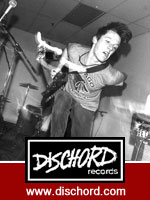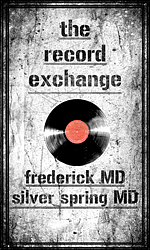 Boston’s indefatigable Mission of Burma is on the road again, and the group brought their potent brand of post-punk-art-rock-indie brilliance to the District of Columbia this past Saturday, where they delivered a set designed to satisfy newcomers and longtime fans alike.
Boston’s indefatigable Mission of Burma is on the road again, and the group brought their potent brand of post-punk-art-rock-indie brilliance to the District of Columbia this past Saturday, where they delivered a set designed to satisfy newcomers and longtime fans alike.
By my count, Saturday 9/8 is the fifth time Mission of Burma has played Washington, DC since rekindling back in 2002. And my count is pretty reliable, since I’ve been to all of those shows, every one hosted by the Black Cat, one of the Nation’s Capital’s best locales for live music.
Five times might seem like an intense and perhaps even bizarre devotion to a group that lacks a light show or for that matter any other attribute that can be chalked up as spectacle. Much as it no longer accurately fits them, a lingering perception continues to place Mission of Burma at the forefront of indie-rock’s reunions movement, an environment that fosters a “see the band once, save the ticket stub, and check them of the list” mentality.
Even if a reunion show is mind-bendingly great, an inner logic can nag an attendee into believing the greatness they’re absorbing is directly related to the very circumstance of the band getting back up onto a stage and delivering a special something that so many in the crowd missed the first time around. And that inner logic insists that it couldn’t possibly be that amazing the next time. Now that might apply in many situations, in fact most even, but certainly not all, as Burma’s most recent Black Cat stand made plain.
But first things in their proper place; the night began with a fine set from Philly’s Purling Hiss, a trio of the classic formulation (that’d be guitar, bass, and drums) that threw down ten songs dominated by heavy, riffy, definitely post-Stoogoid rock. The guitarist had a wah-pedal and wasn’t a bit afraid to use it, the bassist appeared to be in head-bobbing, finger-plucking bliss for their entire time on stage, and the drummer was one of the greatest of all things, a player single-mindedly devoted to driving their rhythmic swagger all the way down to the toes of that wallflower nursing a drink at the back of the room.
As Purling Hiss progressed, I heard flashes of Mudhoney, Screaming Trees, Dinosaur, and even the obscure but fantastic Connecticut heavy-psyche band, Crystalized Movements. This last name-check sprung to mind mainly due to the guitarist’s propensity to solo; he lacked the Movements’ main string-monster Wayne Rogers’ range and array of effects pedals, but he definitely shared the desire to achieve a certain extended plane of dusted wonderment.
Purling Hiss exemplified a pounding, punk-steady no-big-deal grove rock. And maybe their only misstep was in titling the latter portion of their set toward more popish, vocal-driven numbers. In bringing it down they perhaps did so a little too much. But the closing number brought it all back up again, and if Purling Hiss toured in the near future as an opener for some other act, I’d make it a point to get there early and check them out.
Now for the main attraction; all four of Burma’s post-reunion records have displayed a heavier sound than that of their “classic” early-‘80s studio releases, a relatively small portion of their discography that continues to portray them as a pinnacle of art-punk. And an art-punk apex they surely are, but they are also, more importantly I think, a truly galvanizing performance unit. As excellent as each and every one of their recordings are, Mission of Burma are an experience best had live.
The band’s latest record Unsound does an especially fine job of communicating this live power, and that fine LP’s “Dustdevil,” jumping out of the second slot in Burma’s outstanding set, drove home a punk-fired density that is quite different from what’s contained on their debut 7-inch and the “Signals, Calls and Marches” EP. In fact, watching a bunch of my fellow audience members both young and old flail themselves into an accompanying pogo as “Dustdevil” throttled forth, it became apparent this specific song would’ve went down an total storm with those shaven-headed Beantown hardcores who considered Burma too “arty” way back in the day.
Well, arty smarty. Roger Miller, Clint Conley, and Peter Prescott are arty like Wire is arty. Mission of Burma’s last four records and the live shows in particular have been tiptop examples, proudly in the “12XU” tradition, of art-punk’s ability to influence the louder/faster elements of the form. And like Wire, Mission of Burma is a trio on stage. Yes, they utilize the talents of Shellac’s Bob Weston at the soundboard and as a touring producer/mixer/tape-looper (ala departed member from the band’s first phase Martin Swope), but all bands should be fortunate enough to shape their live shows into experiences so rich with sonic range, so thick and loud and yet possessive of such clarity.
Mission of Burma’s ability as a trio rises to the fullest through the material from Vs., and every show from the band features choice selections from the LP that’s by now stone-set as their finest achievement. This night was no exception; “Secrets” particularly burned with an inspiration that exceeded the source recording, with Prescott extremely impressive in the drum seat, a perfect balance of pummel and dexterity, and Conley’s bass expertly blending momentum and melody. Again, the heaviness is undeniable. Bushels of noise rock bands would kill to have (and have indeed borrowed) a bedrock as massive as Prescott and Conley. And Miller’s guitar is by turns psychedelic, pop-savvy, punk-edgy, and at his wildest moments a beautiful barrage of controlled racket.
Over the course of the evening they never set a foot wrong, tackling material both old and new (“2wice” from The Obliterati was given a terrific reading), but like the well-oiled machine that they are, their best moments came late. “This is Not a Photograph” brought another wave of intense reaction from the crowd, a select few even attempting to start a mosh-pit, for Sab Grey’s sake. “Photograph” is a slick fit for the live beast that is the current Burma, as is the set closing shout-along tour de force of “That’s How I Escaped My Certain Fate,” a song that seems to have replaced “Academy Fight Song” and “That’s When I Reach For My Revolver,” as the group’s live staple.
Naturally, there was an encore, though that doesn’t mean they had already decided on what to play beforehand. After about a minute’s deliberation, they ripped into a four song stanza, and while it was marvelous to hear fabulous renditions of “Red” and final song “The Ballad of Johnny Burma,” the highlight was an impassioned blitz through The Dils’ colossal hunk of punk brilliance “Class War.”
While they make a habit of tossing an inspired cover into their encores, witnessing “Class War” live was a definite thrill for this writer. They’ve recorded the song on their “Four Hands” EP and it was also part of the 2002 shows that kicked off the whole Burma recommencement, but so much has happened since that I’d frankly given up hope of hearing them rip into the Kinman brothers’ classic. As such, it was not only an epic surprise, but it also helped to bring the Mission of Burma reunion experience full circle.
Does this mean my fifth time seeing them will be my last? I don’t know, but it’s doubtful, for I’ve entertained the notion on numerous occasions past that I’d reached a point of personal fulfillment with this most unique and expectations defying outfit. But each new album reignites my interest in seeing them play live once again, and each show reinforces my belief that Mission of Burma is one of the finest bands of any era. And 9/8 at the Black Cat was no exception.
I had the opportunity to ask Roger Miller a few questions before the show.
You mentioned on your website that Unsound is your “favorite Burma record since the reformation, by a long shot.” Could you elaborate a bit as to why?
I find that from our new records it has the most ideas per moment, and I’m a big idea person. It’s like when Vs. came out it really confused people, and now it’s been ensconced, and this is all in quotes, it’s been “ensconced in the indie-rock pantheon,” but when it came out we were criticized…one review said that on side one we were shopping for styles. Shopping for styles? That just means we have diverse ideas! We’re not out looking for a fucking style, and it pissed me off because if you listen to the early Beatles records, you’d have a country song with Ringo (laughs) and why weren’t The Beatles shopping for styles, why weren’t they bad? So it pissed me off.
But the thing that excites me about Unsound was that from “Dustdevil” to “Semi-Pseudo-Sort-Of Plan” to “Sectionals in Mourning,” those are three radically different songs. “Sectionals” is kind of drawn out and spacey, “Dustdevil” is hyper-compressed and “Semi-Pseudo” is a sleeker sort of rock/pop tune, and so it continues like that through the whole record, from the complete madness of “ADD in Unison” to the power-pop of “7’s” to like the psychedelic “Opener” at the end, which is like a parody of the whole record, but uptempo…cheerful.
Something that many have noticed about the Mission of Burma reunion is how it lacks the “we’re doing it for the money” vibe. And it’s been going on now for longer than the band was initially together. It really connects as something all of you want to be doing, helping to keep it fresh, along with the fact that all the members are busy with non-Burma related activities and jobs. In your case, The Alloy Orchestra takes up a large chunk of your time, doing live scores to silent films. Could you describe the working method of Alloy (who will be in touring this fall, including a three night stand in Silver Spring, MD at the AFI theatre) a little bit?
Primarily we perform live. We get hired by DVD labels like Image and Kino to put our soundtracks onto the films, but they are all live performances. First of all we do it live and if they want us to record it we do, and then it’s live with a couple little tweaks.
This summer we scored one from scratch called Shinel, which is an avant-garde Russian film from the mid-1920s, again we do silent movies where there is no talking, so we have a lot of freedom…like in modern soundtracking, which I also do a lot of, you have sound, you have the visual, you have sound effects, you have talking and music takes a very back position, but when there is no sound effects and no talking the music has to help tell the story, and it gives Alloy a lot more freedom to be a little more over the top than a modern day soundtrack composer.
So when we have a film like Shinel, we put it in the computer and then we improvise, thinking first about what instruments we want to use, and then we improvise scene by scene, and these are scratch-tracks for us to compose off of. And I’m the keyboardist and there are two percussionists, one that plays clarinet and one that plays musical saw and accordion. Once we’ve gotten through to the end, I’ll mess with the harmony as keyboardist and those guys will worry about making the sound effect when the guy gets knocked on the head. And then it’s really hard to get it to where you can play it seamlessly.
The movie starts, and for an hour and twenty minutes you’re playing it. If you speed up the movie isn’t going to speed up. In Mission of Burma an improv section may go on for another thirty seconds than usual, but you can’t do that with a movie, it has to be exact. But that’s our thing. More than recording them to the film for DVD releases it’s the live performance that’s the kick-ass thing about Alloy.
During the era of Burma’s initial formation, record stores had become very important in shaping young listeners who were curious over music that was apart from the mainstream. But you grew up in a previous era in Ann Arbor, MI. Did record stores serve a similar function for you in the late-‘60s?
Yes, we had two of them. Discount Records, they were a chain, in fact there was a Discount Records in Cambridge MA that sold Burma’s “Trem Two,” so they were still around, but Discount was the store where you would go to see all of the most psychedelic records, brand new ones, and I had a whole collection of postcards of The Who, The Yardbirds, and Hendrix, you could pick these postcards up there. And in Ann Arbor, Schoolkids Records became the cool record store, the punk one.
Additionally, I had a moment to ask drummer Peter Prescott about his project Minibeast, available only on vinyl at shows (including the current Burma tour) and via mail order.
Peter, please describe Minibeast.
Minibeast has grown out of stuff I’ve been listening to for more than twenty years, for instance soundtrack music, world music, and I don’t mean world music in a drum circle sort of way…I ended up listening to a lot of records that a lot of people sampled from. I didn’t sample any rhythms, I played the rhythms on it but they are drum loops, things that I would loop. So they are sort of architectural sculptures with space rather than songs. And I’ve wanted to make a record like that for years, and I had the time and had the hard drive in my house to do it. Minibeast is more background music, or stuff you put on while you’re doing something else.
Ambient?
A little bit. It’s got beats and a little bit of distorted guitar and stuff like that, but you could call it ambient


















